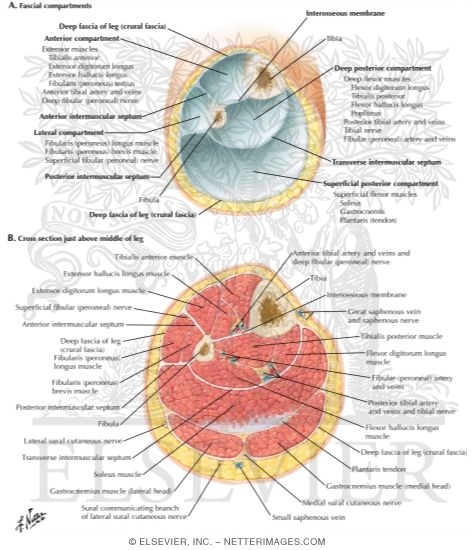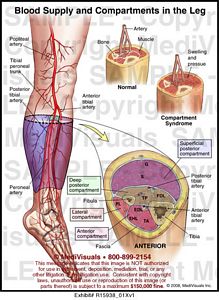

Although not the only cause, biomechanics are often a contributing factor in the development of exercise-induced compartment syndrome.

Treatment for exercise-induced compartment syndrome starts with optimizing the runner’s biomechanics. How is exercise-induced compartment syndrome treated? Rarely would a more specific imaging test such as MRI or CT be needed unless other problems are suspected. This typically involves a treadmill run in the office. Pre-exercise, base-line measurements are obtained and then the runner is measured when the symptoms during exercise. This is accomplished by using handheld device with a small needle that is inserted into the compartment. However, the exact diagnosis requires measurement of the intra-compartmental pressure. The symptoms are often sufficient to establish the correct diagnosis. The foundation for diagnosing exercise-induced compartment syndrome is a runner’s clinical history. These symptoms will resolve shortly after the exercise is stopped. Often runners can predict the onset because it generally occurs at about the same distance each time. The symptoms generally take several minutes or longer to develop. Research has shown up to 45% of runners with exercise-induced compartment syndrome will notice the muscle herniating through the fascia – a semi-firm bump overlying the muscle in the leg. Because there are several leg compartments, the exact location of pain will depend on which compartment is affected. In some cases, tingling, numbness, or a pins-and-needles sensation will occur in the leg and foot. Runners with this condition will typically complain that their leg feels swollen or stiff. Throbbing pain in the middle of the leg during exercise is the first symptom of an exercise-induced compartment syndrome. What are the symptoms of an exercise-induced compartment syndrome? Rarely does more serious damage occur to muscles, nerves, and blood vessels. However, pain will occur if the compartment pressure increases beyond a safe limit. Generally, venous and arterial blood flow is automatically adjusted by the body to keep the compartment pressure within a safe range. Consequently, the muscle compartments in the leg must allow for the increased blood flow and increased size of the muscle tissue during exercise. The volume of a muscle can expand by up to 20% during exercise. What is a exercise-induced compartment syndrome? Due to the strong nature of the bone and fascia, the size or volume of these compartments does not change during exercise. These compartments are separated by bone and fascia, a thin but tough sheet of connective tissue. The muscles of the leg are located in distinct compartments which also contain arteries, veins and nerves.


 0 kommentar(er)
0 kommentar(er)
